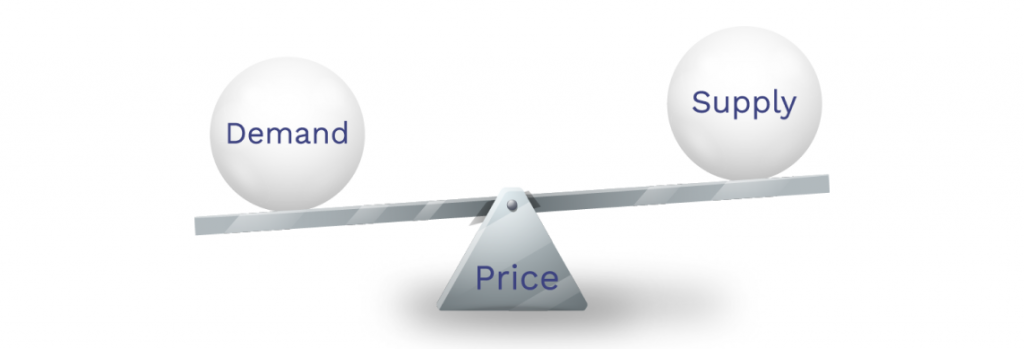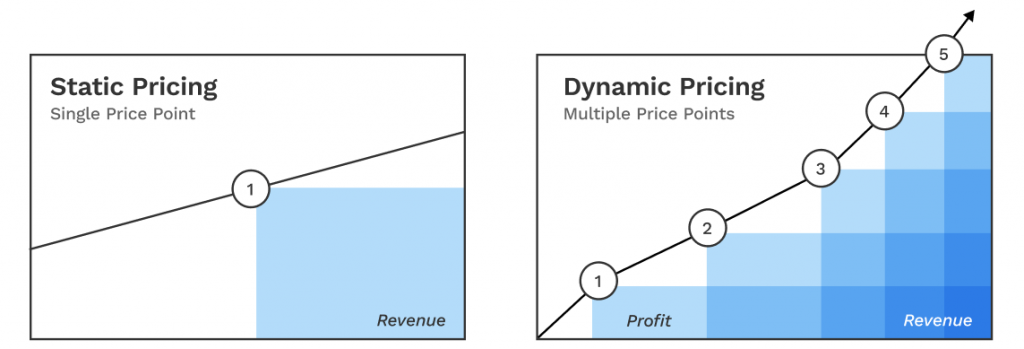9 Things to Look For in a Pricing Platform
9 Things to Look For in a Pricing Platform
Recent studies have projected that the global market for price management and optimization software will grow at a compound annual growth rate (CAGR) of 16.3% through 2031, capping $6.5 billion in total value. The integration of new technologies such as machine learning and AI into price point optimization software and pricing platforms is driving growth in this sector and attracting major retail and ecommerce clients.
If your business is currently making this transition and evaluating different pricing platform software, you need to know what essential features to look for. In this guide, you’ll learn what pricing platforms do and what features should drive your choice of products.
Key Takeaways
- The global market for pricing platforms and price point optimization software is growing.
- Pricing platforms use automation and data analytics to help businesses determine and implement different pricing strategies and variable prices.
- Hypersonix’s pricing and inventory AI for profit optimization provides unrivaled capabilities for identifying pricing risks and opportunities.
What Is a Pricing Platform?
A pricing platform is a kind of price point optimization software that businesses such as retailers and ecommerce stores use to manage product prices and maintain profitability through fluctuations in supply and demand. Pricing platforms rely on data analytics to enable businesses to make smarter, data-backed pricing decisions and implement them faster through various automation capabilities. To handle large volumes of complex data in real time, many pricing platforms employ machine learning and AI-driven software tools.

Pricing platforms draw on both internal and external business data sources. Internal sources include systems like customer relationship management (CRM) software and enterprise resource planning (ERP) platforms. Analyzing customer data and supply chain and distribution conditions helps businesses use dynamic pricing features like customer-specific rates and discounts as well as regional pricing variations to match variable costs. The data pricing platforms capture can also provide feedback on price performance and customer reception.
Pricing platforms monitor external data from market activities, competitor pricing, and macroeconomic trends. Applying analytics to these data sources often reveals time-sensitive opportunities to optimize profits or mitigate losses. As more businesses adopt analytical tools to replace manual, spreadsheet-driven decision-making processes, systems like pricing platforms become increasingly critical to meeting business goals and staying competitive.
Price Point Platform Features and Capabilities
Platforms from different software vendors will vary in specific features. Nevertheless, any platform worth investing in should offer these nine capabilities.
1. Order Management
An order management console consolidates orders from the different channels you use on one screen. From there, you can monitor order statuses, select shipping options, and route orders to third-party fulfillment services. For businesses that rely on multiple sales platforms and ship internationally, consolidated order management is critical for timely fulfillment and cost-effective logistics.

2. Inventory Management
A real-time inventory management tool prevents overselling and backlogged orders for out-of-stock items. Using your own sales data, you can configure your platform’s inventory management feature to issue notifications when stock levels dip beneath selected thresholds. To be effective, this feature should synchronize inventory data across locations and sales platforms.
Platforms with AI capabilities can extract valuable insights from inventory data and deliver inventory intelligence as an alternative to just-in-time inventory methods that are vulnerable to supply chain disruptions.
3. Marketplace Listing
Manually setting prices, quantities, and product information across individual sales platforms is inefficient and time consuming. Pricing platforms should offer a single location to create and publish listings for all the marketplaces you use. Editing in bulk reduces errors and ensures that all sales platforms display current, correct information.
4. Automated Market-Driven Repricing
Although the degree will vary, nearly all ecommerce businesses and retailers benefit from automated repricing. Pricing platforms can monitor competitor prices and implement automatic adjustments within predetermined tolerances. This applies not only to lowering prices when a competitor undercuts but also to raising prices when the market value of an item goes up, maximizing profit margins.
5. Dynamic Pricing
Dynamic or time-based pricing is a price point strategy that sets flexible prices for products and services based on market demand. Pricing platforms can adjust prices dynamically, considering customized factors such as competitor pricing, supply and demand, and variations in market value by location.

6. Intuitive Uploads and Imports
Retailers and ecommerce businesses handle product information and associated files like pictures, artwork, and video content from a variety of sources and departments. Pricing platforms can expedite listing new items or publishing updates by providing drag-and-drop tools for file uploads and imports. This functionality should also include basic editing tasks, such as resizing pictures and formatting product information texts.
7. Live Support
When your teams inevitably encounter unexpected issues they cannot resolve on their own, it’s critical to have capable and responsive live support to overcome technical challenges. For large enterprises and businesses with an international presence, business hours support will not suffice and contracted platforms should offer 24/7 support options for phone, email, and in-app chatting.
8. Automated Personalization
Customers tend to perceive automated flexible pricing strategies like dynamic pricing negatively. However, personalized automated pricing adjustments often work in their favor while helping businesses build brand loyalty. Businesses can use pricing platforms to implement personalized offers, bonuses, and rewards.
For maximum benefit, personalization should extend beyond registered accounts and serve tailored content and search results based on previous browsing.
9. Predictive Pricing Models
Conducting trial-and-error pricing strategies in the real world is costly and risky. However, today’s analytical tools and AI-based applications enable accurate simulations of pricing performance over time. With the ability to run 100s to 1,000s of simulations for small increments of price variation and represent outcomes with data visualization tools, businesses can identify optimal pricing within a narrow range. This kind of predictive modeling has become increasingly common in major pricing platforms.
AI-Driven Pricing and Inventory Optimization with Hypersonix
Hypersonix leverages AI and machine learning algorithms to turn business data into specific, actionable insights. With powerful simulation capabilities and monitoring for price point factors such as supply chain status, macroeconomic trends, and weather data, Hypersonix guides decision-makers to swift, data-driven courses of action.
To learn more and request a demo, contact Hypersonix today.
.png)




